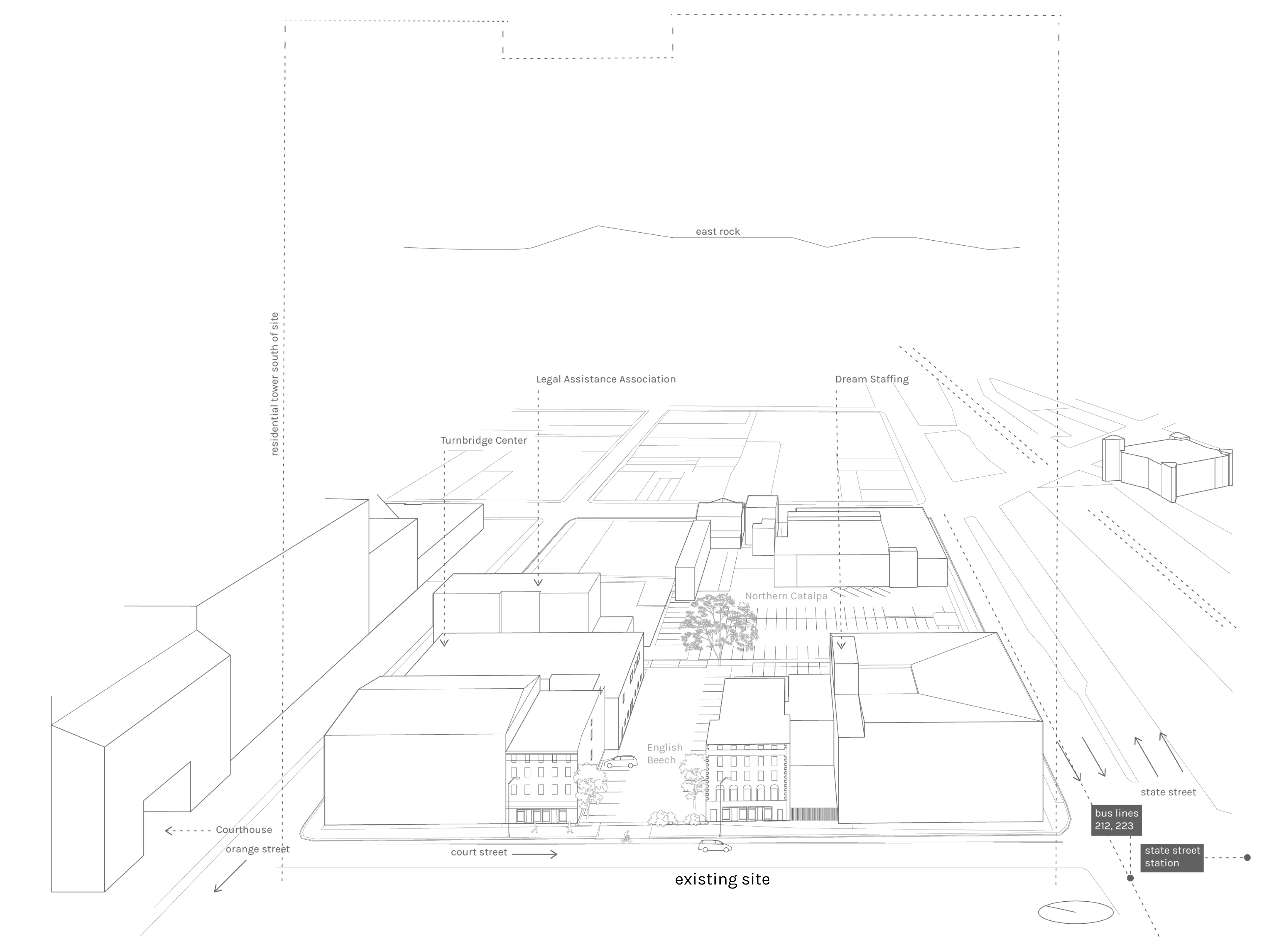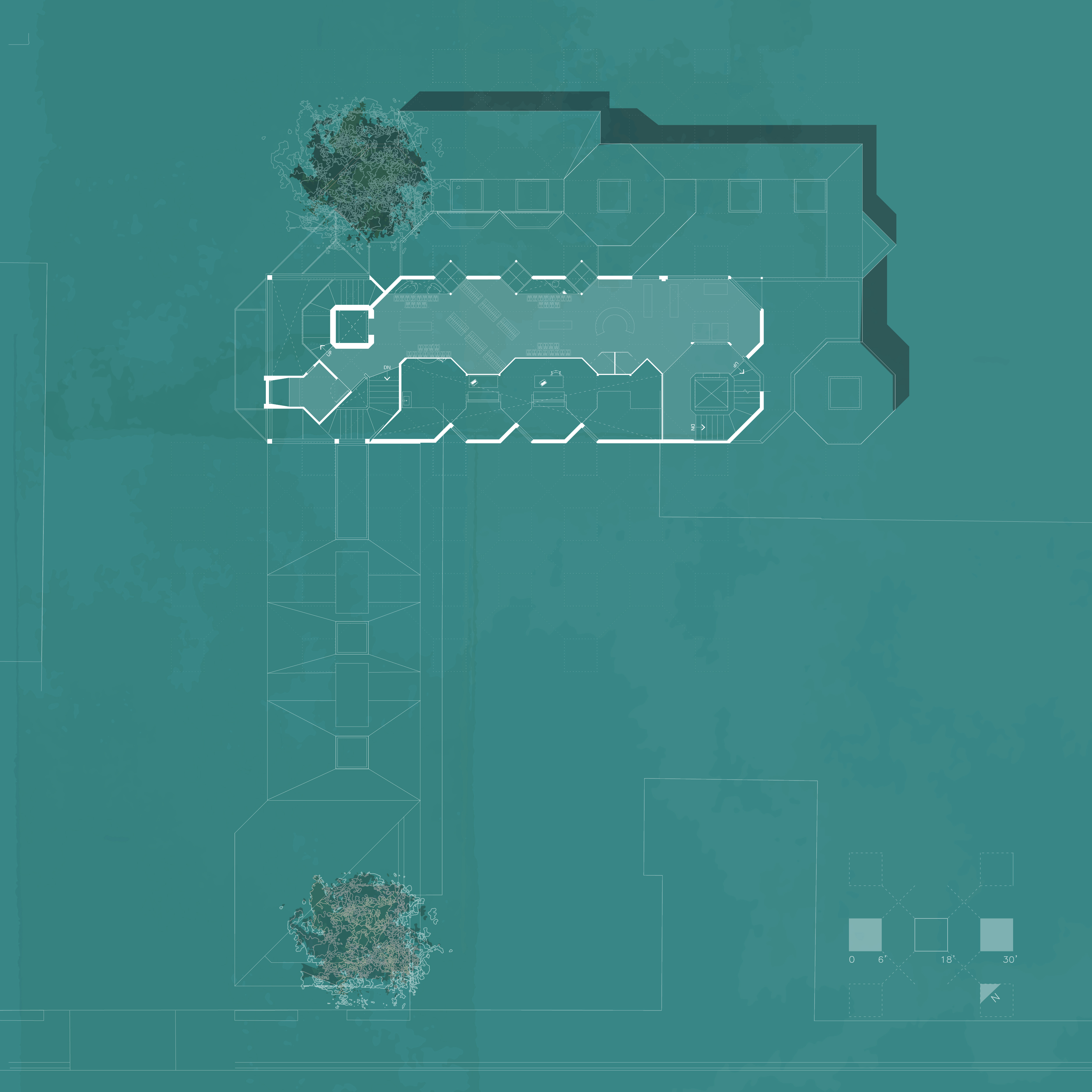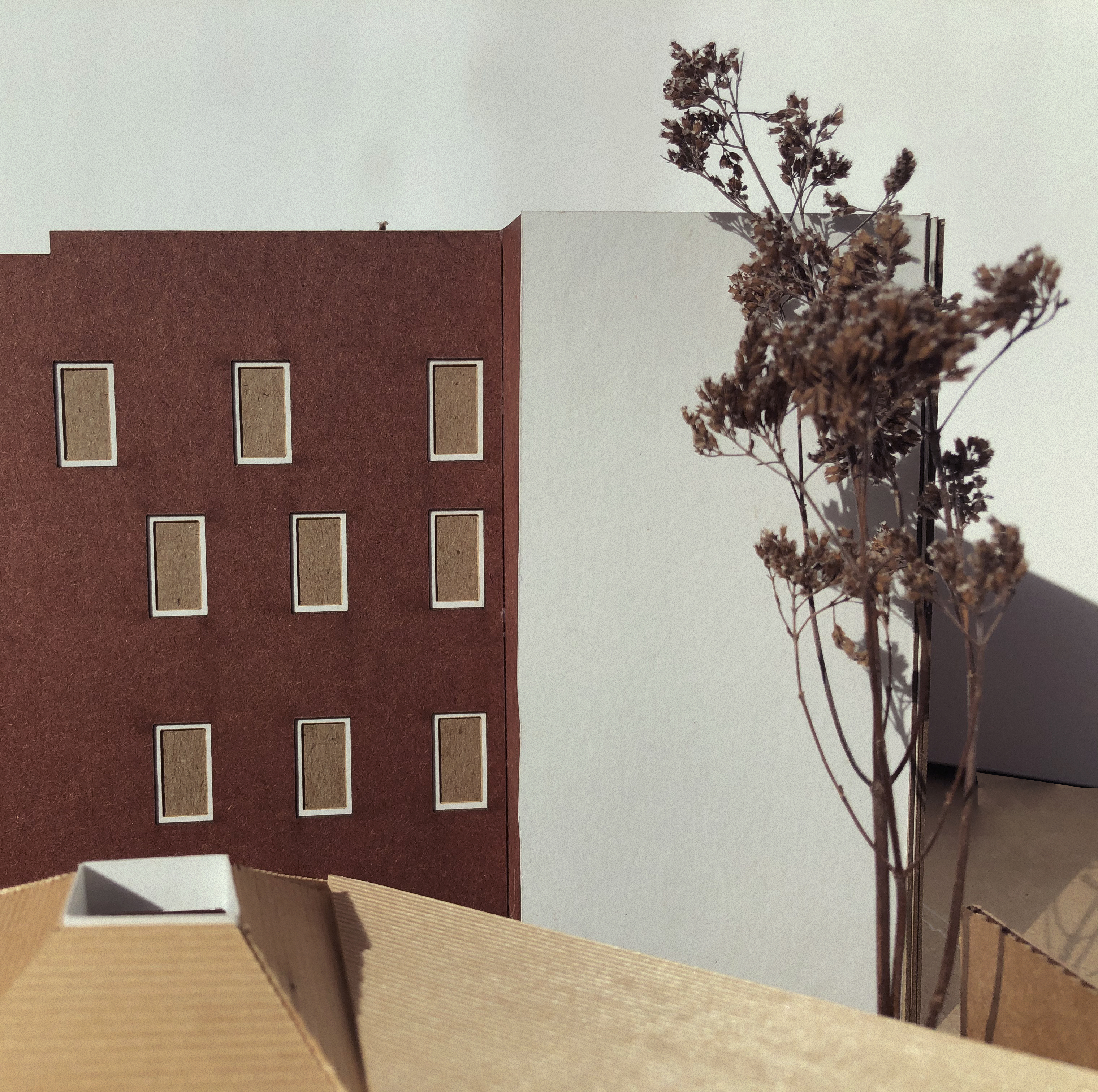Family Justice Center / Spring 2020
Advanced Studio with Turner Brooks and Jonathan Toews
H.I. Feldman Prize Nominee
Advanced Studio with Turner Brooks and Jonathan Toews
H.I. Feldman Prize Nominee
EMBODIED
A Family Justice Center
A Family Justice Center finally acknowledges domestic violence as a public health crisis "of epidemic proportions" (Snyder, No Visible Bruises). As both a civic establishment and a resource for victims, these centers coalesce multiple avenues of assistance, ranging from medical to legal to psychological.
Throughout the semester, we met with professionals, visited American and Dutch Family Justice Centers, and worked closely with BHcare’s The Umbrella Center for Domestic Violence Services to learn from them and present our proposals for a Family Justice Center in New Haven. In tandem, we continued to unpack the rich architectural themes derived from the meaningful program, conceived as a series of dualities—the civic vs. the discreet, autonomy vs. coexistence, child’s innocence vs. violence, and immediate needs vs. future aspirations. These dualities were eventually broken down through model making, drawing, and literature, where "liminal space", "ambiguity", and "vulnerability" became very real architectural concepts with which to contend.
Throughout the semester, we met with professionals, visited American and Dutch Family Justice Centers, and worked closely with BHcare’s The Umbrella Center for Domestic Violence Services to learn from them and present our proposals for a Family Justice Center in New Haven. In tandem, we continued to unpack the rich architectural themes derived from the meaningful program, conceived as a series of dualities—the civic vs. the discreet, autonomy vs. coexistence, child’s innocence vs. violence, and immediate needs vs. future aspirations. These dualities were eventually broken down through model making, drawing, and literature, where "liminal space", "ambiguity", and "vulnerability" became very real architectural concepts with which to contend.
Project Approach
Victims of domestic violence embody their trauma (Bessel van der Kalk, The Body Keeps the Score). Though the wounds are not always visible, they can begin to manifest physically: in posture, in a tendency to avoid eye contact, and in an inability to feel pain, or even identify it.
As designers of space, and curators of sensory experiences, how can we even begin to talk about embodying space when we are working with people, who, due to trauma, have difficulties embodying their own body?
‘Embodied’ proposes that such a reconnection is possible through architecture. The process is action-oriented, broken down into three verbs: to arrive, to address, to attune. To arrive speaks of a conscious decision to seek help. A looped entrance allows clients to slip discreetly into an entry courtyard, while their path is crossed with staff—a dignified yet secure arrival. To address understands that needs must be met in every stage of life. Intake rooms are made available throughout the center welcoming the need for reassessment. And to attune celebrates the desire to engage with life itself. A ‘donation runway’, where clients can pick out and parade a new change of clothes along a runway, looks over the office spaces below. These verbs help recognize that clients can transition in and out of these states of victim, thriver, and survivor.
As designers of space, and curators of sensory experiences, how can we even begin to talk about embodying space when we are working with people, who, due to trauma, have difficulties embodying their own body?
‘Embodied’ proposes that such a reconnection is possible through architecture. The process is action-oriented, broken down into three verbs: to arrive, to address, to attune. To arrive speaks of a conscious decision to seek help. A looped entrance allows clients to slip discreetly into an entry courtyard, while their path is crossed with staff—a dignified yet secure arrival. To address understands that needs must be met in every stage of life. Intake rooms are made available throughout the center welcoming the need for reassessment. And to attune celebrates the desire to engage with life itself. A ‘donation runway’, where clients can pick out and parade a new change of clothes along a runway, looks over the office spaces below. These verbs help recognize that clients can transition in and out of these states of victim, thriver, and survivor.
It is the spatial transition that is critical—the realization of a “delta”, and therefore one’s own spatial substance. These actions shaped the character of an underlying dynamic grid based on trauma-informed spatial principles that create and configure a variety of compounded, scale-sensitive spaces. The dynamic grid also established a unified latent current that quietly directs circulation.
‘Embodied’ is rooted in a desire and responsibility to understand, and address both collective and individual needs. This semester underscored the importance of incorporating those needs and integrating realities, like trauma, into the design process, no matter how complex or messy, at all times and scales.
‘Embodied’ is rooted in a desire and responsibility to understand, and address both collective and individual needs. This semester underscored the importance of incorporating those needs and integrating realities, like trauma, into the design process, no matter how complex or messy, at all times and scales.
















Midterm work / Process








Program
GF [reception, waiting spaces, intake rooms, children’s area, law enforcement, motion studio, cafe, kitchenette, emergency healthcare and housing, wc]F1 [staff quarters, meditation room, laundry room, emergency housing 2]
F2 [offices, conference rooms]
F3 [*]
F4 [mock court room, event space, bar]




[*] This Family Justice Center provides spaces to help clients and staff attune with their substance and life. I’ve included a motion studio (ground floor space for yoga lessons, kickboxing, daycare extension …) and a donation runway. This runway looks over the office spaces, runs along the center of the building and displays clothes donations, toys, etc. in a way that becomes appealing to engage with. Changing rooms become an empowering space and are depicted on the right.











